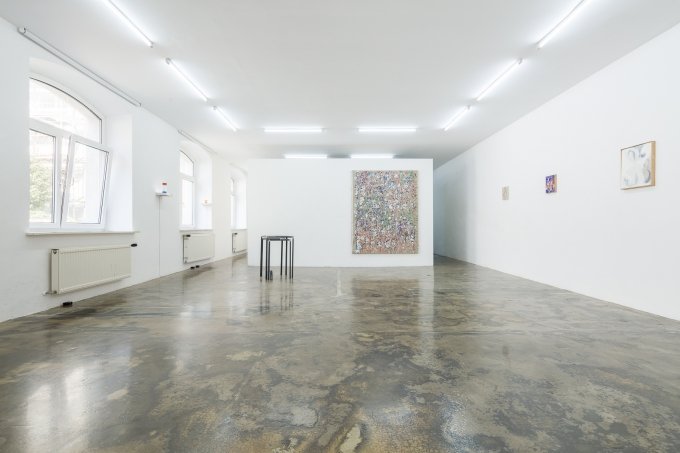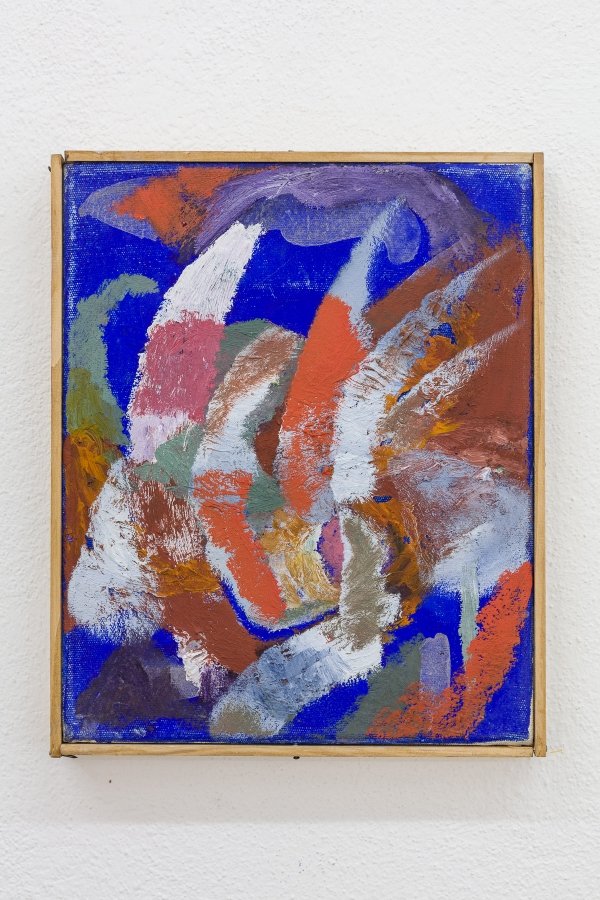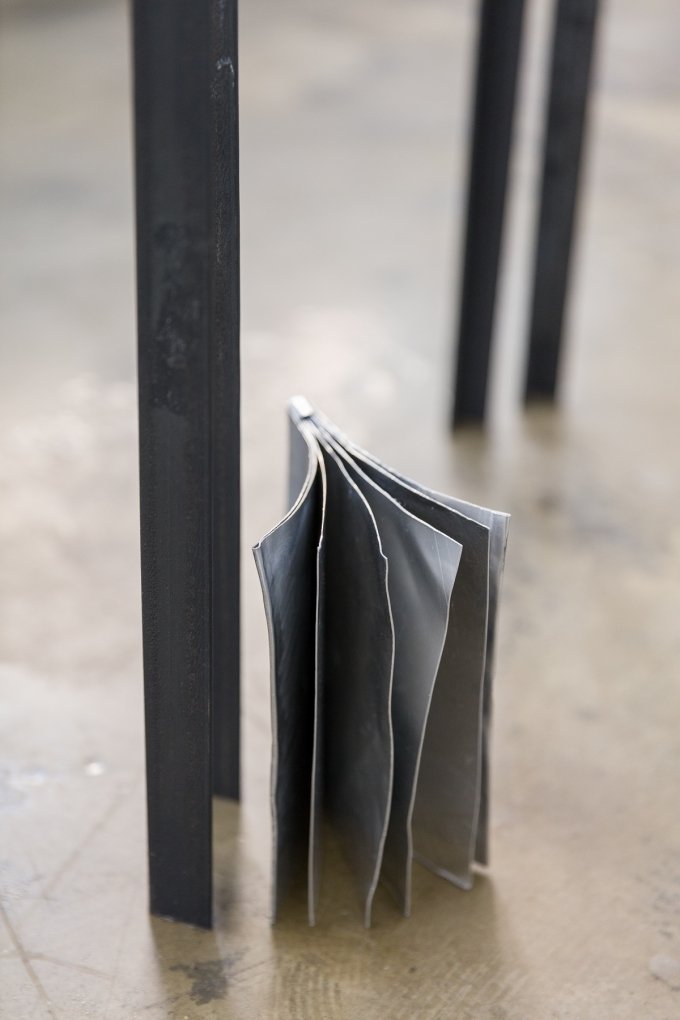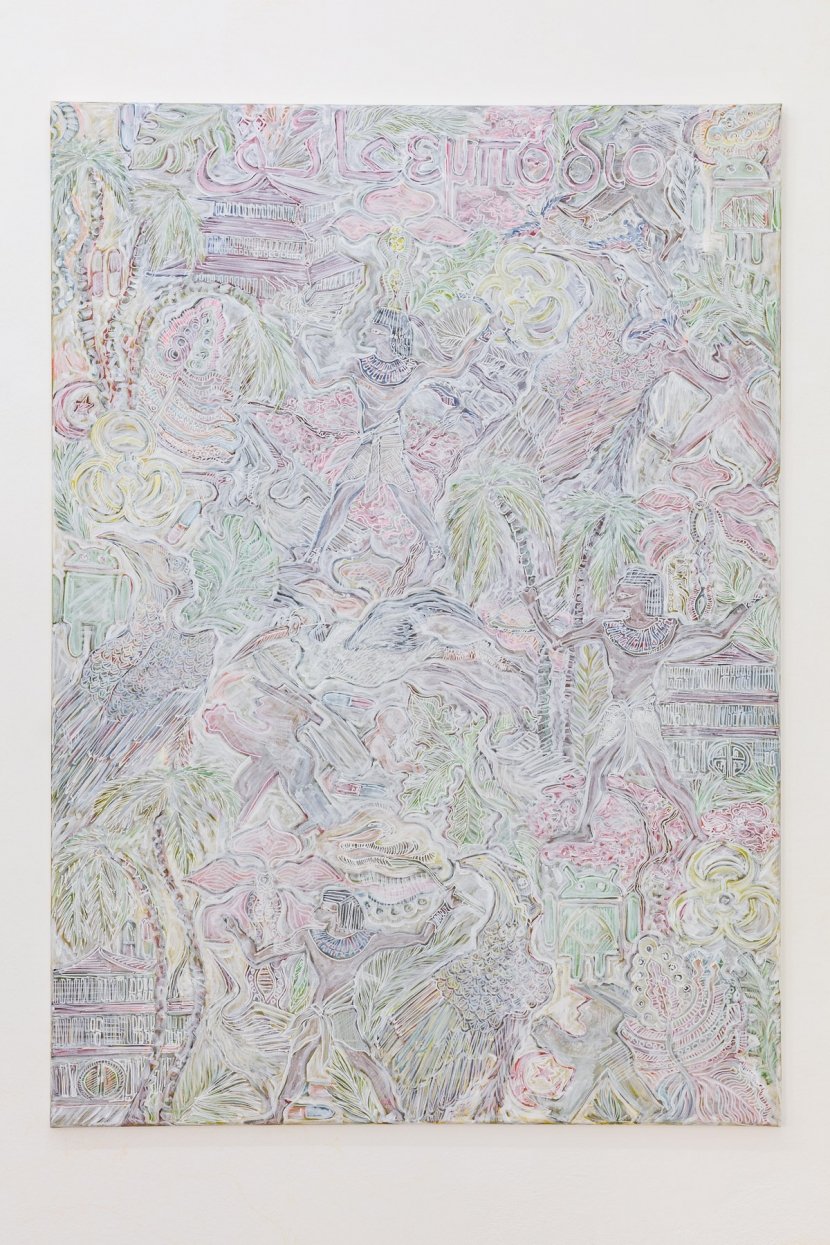Hindrance to Modern Speed bei Sehsaal, Wien
Pawel Szostak
Sehsaal
Zentagasse 38, 1050 Wien
Österreich
KünstlerInen: Rui Miguel Leitao Ferreira, Thilo Jenssen, Daniel Moldoveanu, Carolina Laura Rotter, Pawel Szostak, Edin Zenun
Titel: Hindrance to Modern Speed
Datum: 10. Oktober - 19. Oktober 2018
Fotografie: Courtesy Daniel Moldoveanu | Foto: kunst-dokumentation.com
Notiz: Organisiert von Daniel Moldoveanu
Ausstellungstext:
The artwork as an entity to be given time to and in reverse, a greedy object forcefully seducing the observer to delay modern rapidity and replace it with primitive evaluation based on curiosity, is explored under the context of painting, sculpture and film. Here, layering plays a totalitarian role; context layering, figurative, abstract, subjective or chemical. What are the methodologies at hand, with which we can slow down superficial viewing and observatory processes imposed by a rapidly moving digital world?
Rui Miguel Leitao Ferreira’s way of painting is conceptual and intense. The works constitute tension between figurative and abstract and are generated by creating thick figurative coloured linear images (silhouettes) onto one canvas, which then get glued on to the next and ripped of once dry. Here, the hyper layered surface of colour and texture, offers viewers a complex display between abstraction and figuration, high and low, careful and careless encouraging a multitude of reading perspectives within one surface.
Daniel Moldoveanu’s paintings are built on a theory of over-filling the canvas with figurative elements and then reunifying all of them by overpainting the surface with white, often using materials such as correction pen and marker to cover and convey a seemingly abstract surface. The figurative elements refer to two-dimensional painting as a fast-communicative tool during historical cultural practices.
Pawel Szostak’s video work, entitled “MIV”, takes a critical stance on depersonalized content which surfaces the internet and remains unobserved. As a way of multiplying tensions and sharpen observance, the work overlaps different found footages (which have all been titled by You Tube as “MVI”), in a purposefully algorithm generated aesthetic and shapes up a chaotic, permanently moving hybrid – confusing both the eye and mind.
Arriving at the abstract, Edin Zenun’s paintings offer a different position generating the same outcome. Here, it is material and the way colours interact to their surroundings (on the canvas but also in physical space), in a both precise and a homogeneous idiom that seeks out whispers of attention. His practice is based on a lengthily time- based painting procedure which aims at morphing the composition in till it reaches immunity to time itself.
The title of Thilo Jenssen’s works “Palermo Desire” makes reference to the late German minimalist painter Blinky Palermo. As means to convert and translate minimalist paintings into objects, every glass contains an assortment of both high and low sugar alcohol, putting in question the social connotations of different beverages. The sculptures change their coloristic spectrum with time offering an even wider spectrum of transitions.
Carolina Laura Rotter’s sculpture modulates a kind of layering, which is based on context and perception. The display as an art-object is modulated considering theories of speculative realism and further explores object relations. Concluding that the coloured glass surfaces are there for the layer of sensual experience between an object and a subject or a viewer, the foundation of the work is unique in its contradictory physical singularity but multiple facets of context.




